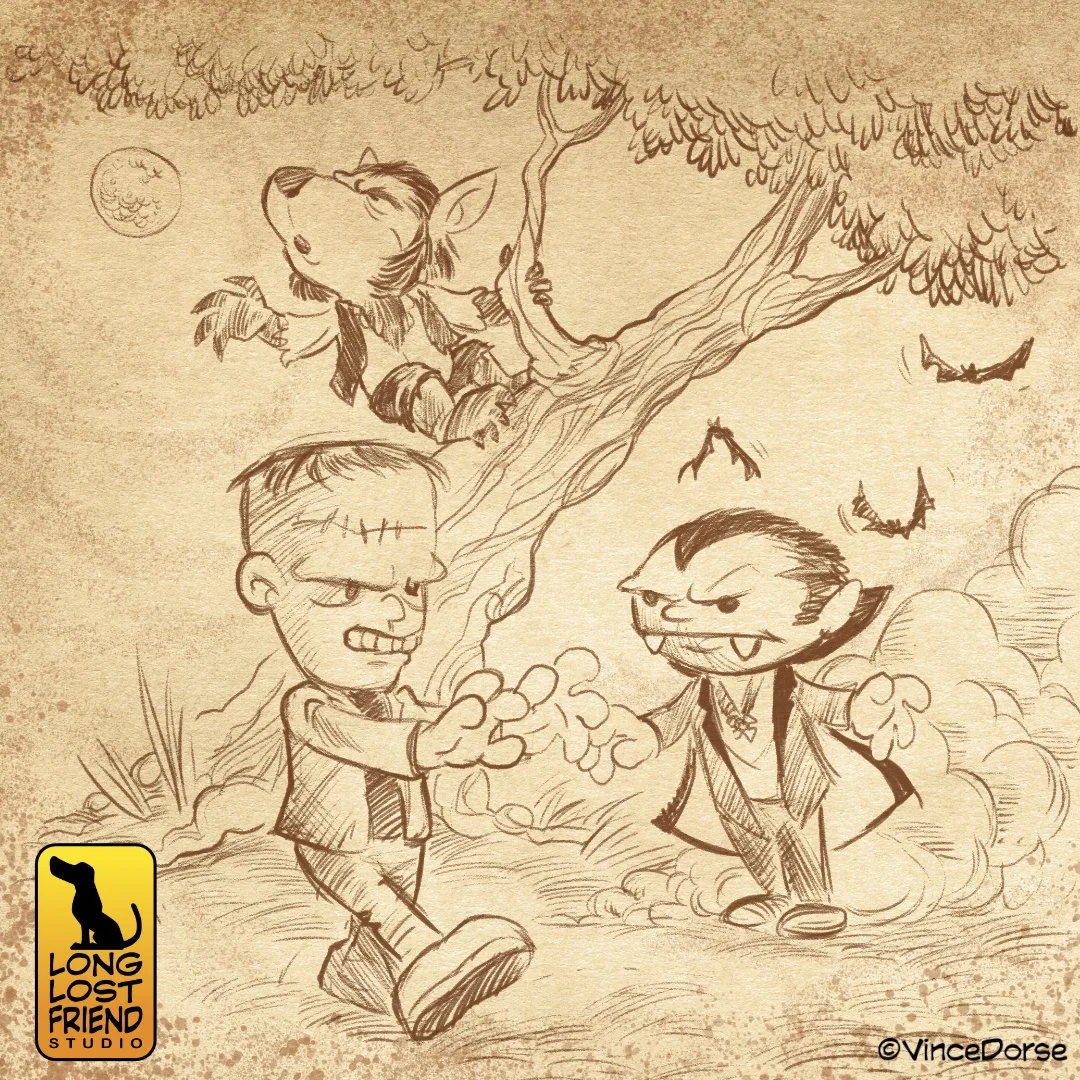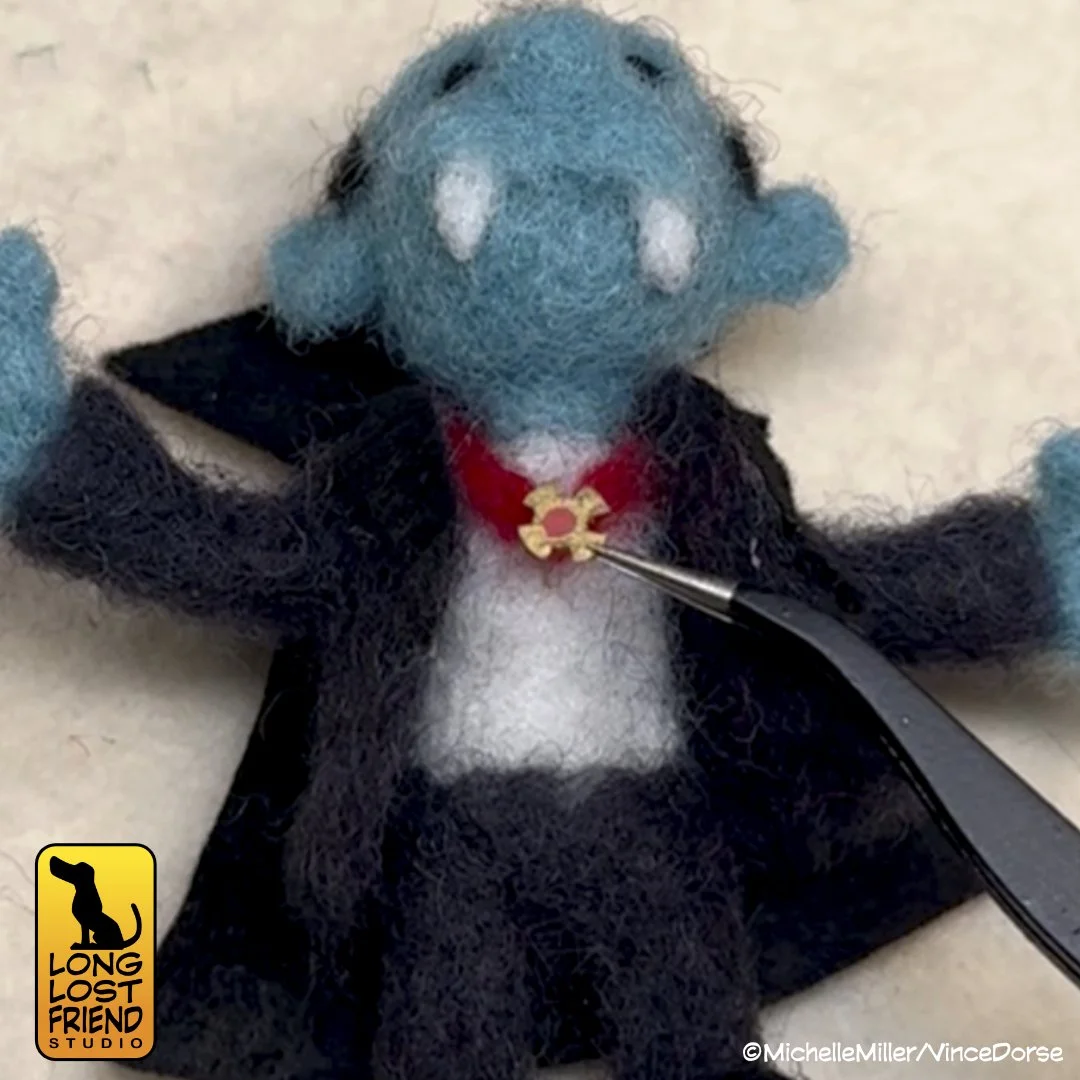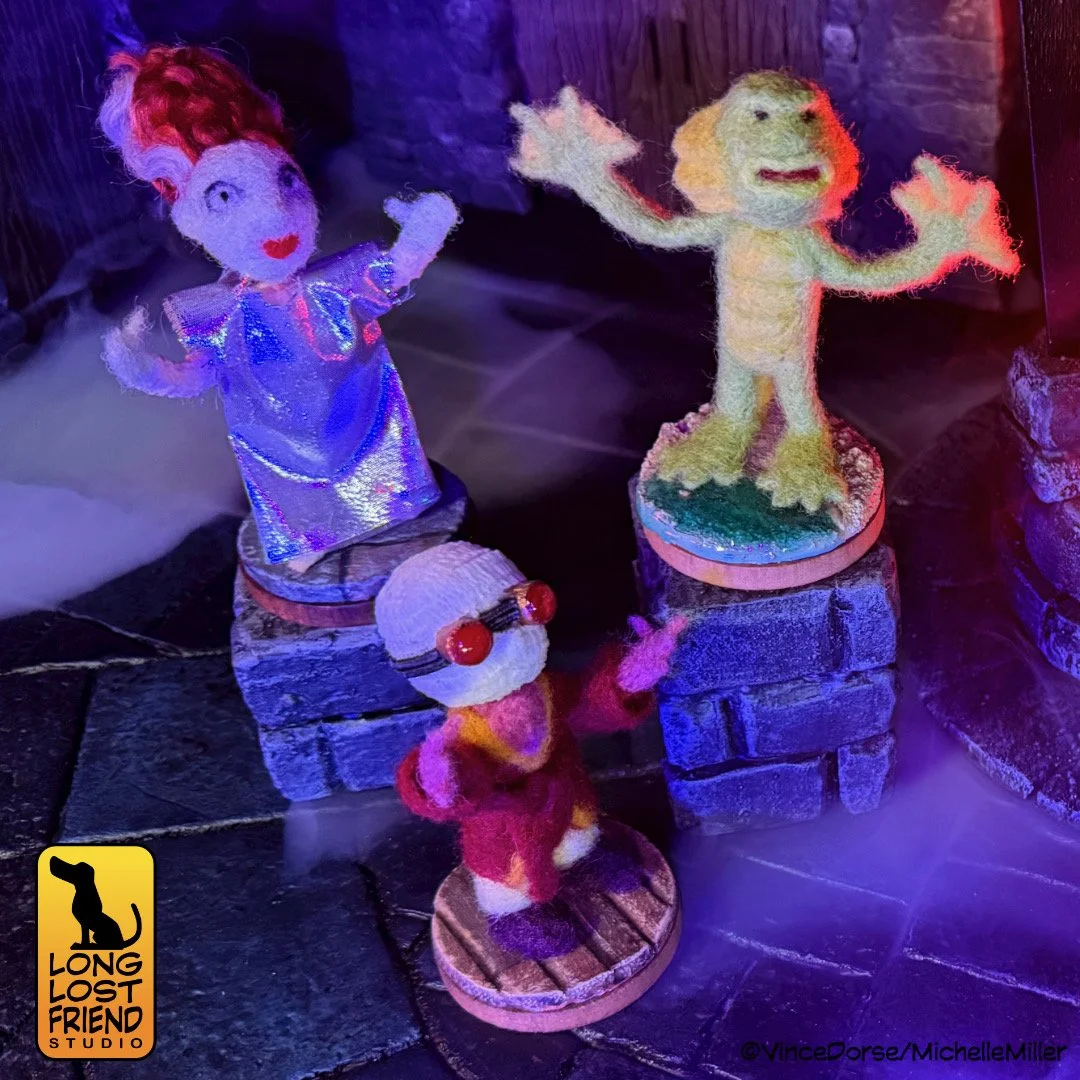It’s A Dark Universe, But Also Fuzzy
Concept sketch for the Mini Dark Universe project
Michelle and I thought it’d be fun to create a miniature version of Universal Orlando’s Dark Universe Theme Park out of felt and foam. Some of the impetus behind that was naked envy of anyone who got to go to the grand opening of that park while we toiled, vacationless, in our spider-infested workshop. But mostly we did it as a productive way to sharpen our skills and make some monsters.
Like any good Frankenstein, Michelle put this together piece by piece.
Michelle did most of the heavy lifting where the needle felting was concerned. But even I pricked my fingertips a few times trying to help shoulder the workload. The goal was to make five or six of the monsters most often encountered at the Universal Orlando theme park. Working on the designs for these miniature monsters — rooted solidly in the imagery of the early Universal Monster movies — I wondered how it was that those particular visuals remained so pervasive for so long.
“Aaaarrrghhh, Needle in eye BAD!”
Mary Shelley’s description of the monster in the novel fueled the many illustrations in various editions, but it’s Jack Pierce’s green-skinned, flat-topped hulk that lives on in movies, comics, and pop art. Why is that?
If we’d stopped here this could’ve been a Nosferatu felt.
I’m clearly not an anthropologist (as the Board of Regents keeps reminding me) but it seems like some of that impact might be attributed to capturing a concrete image on film and distributing it to the masses. I’m guessing many of the people who read Frankenstein in that first hundred years didn’t invest in a deluxe illustrated edition, so their image of the monster was individual to them…to whatever their imagination conjured while reading Shelley’s prose. Others were introduced to the monster through stage plays, where the makeup could vary from production to production. So the visuals were a mixed bag.
“Nooo! The tweezers are silver! Blaaaahh…..”
But in 1931, Jack Pierce screwed those bolts into Boris Karloff’s neck, and crafted a head for the monster that could balance a teacup filled to the brim. Once that was projected onto the silver screen and absorbed by enough visual cortices across the country, it became a cultural phenomenon in the US and, eventually, across the world.
Who’s a good boy? That’s right! You’re a good boy!
Now a specific, memorable image would coalesce in people’s brains when they heard the name ‘Frankenstein.’ A blocky, 8-foot giant with metal clasps holding his cranium together. And that image burned itself so indelibly into our subconscious that almost a hundred years after that movie was released, we still use illustrations of that stiff-armed, bolt-necked behemoth to decorate for Halloween.
Heads up! It’s the Wolf Man!
But the popularity of these early Universal designs has also got a lot to do with timing: The fact that we still live in the blast radius of Universal Studio’s big monster boom of the 1930s — an impact that’s reverberated through pop culture for the ensuing eight or nine decades. So much of the horror media Michelle and I have consumed has been heavily informed by the make-up effects of Jack Pierce, Lon Chaney, and Millicent Patrick. And that’s mostly thanks to the dumb luck of being born when we were born.
Painting the courtyard stones
But let’s be honest; It’s not just reach and timing that made these monsters iconic. It’s the strength of the designs, that indefinable connection they made with the public, that has everything to do with their marketability.
Case in point: There were a handful of vampire films prior to Universal’s Dracula in 1931. Perhaps most notably, 1922’s Nosferatu, which has been remade at least twice, re-introducing new generations to the image of a balding, rat-toothed vampire. But it’s still Bela Lugosi’s interpretation, with his suave European accent, flowing cape, and slicked-back hair that endures. The Nosferatu design was undeniably powerful, but perhaps not as palatable. But what do I know? Maybe there’s an alternate universe where Sesame Street’s Count Von Count is tiny, bald vampire with rat teeth and zero charisma.
The backdrops for this piece were flats, like in the movies.
Taking all that into account, I guess it’s easy to see why Universal Monster iconography has lasted as long as it has. And why it’s been such an influence for creators of horror media for the last few decades. It obviously influenced much of this Dark Universe set that Michelle and I worked on, as well as many of the other pieces we create in the shop.
The big three: Wolverine, The Hulk, and Doctor Strange
And while new takes on these archetypal monsters are always welcome, there’s something very comforting and cozy about vintage Universal horror that makes me certain we’ll be revisiting this Dark Universe many more times in the future.
“Come and knock on our door, we’ve been waiting for you….”
To watch Michelle make a clutch of adorable monsters while I complain about not getting free stuff from a billion dollar media conglomerate, you can see this week’s video at the link below.










